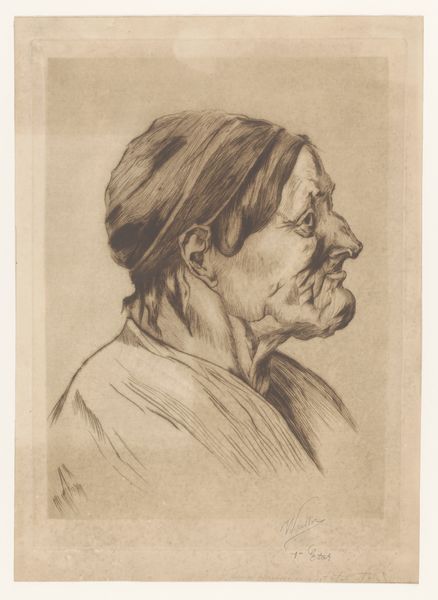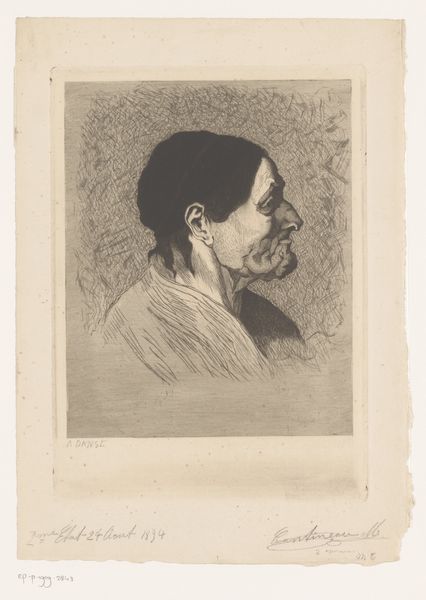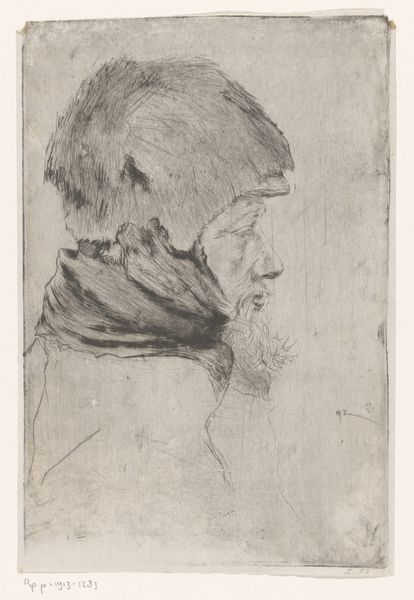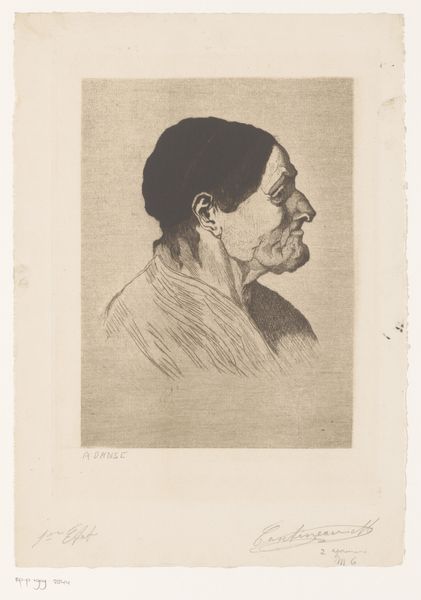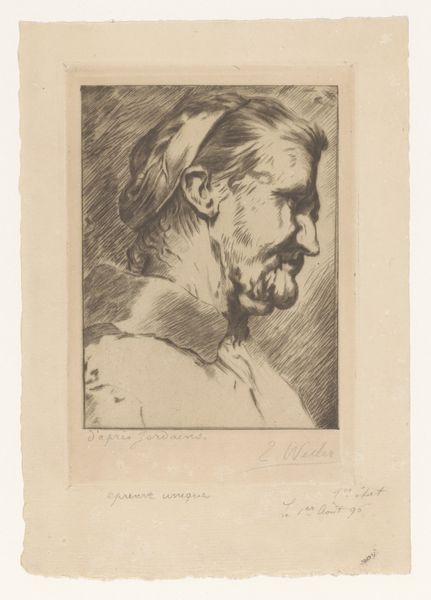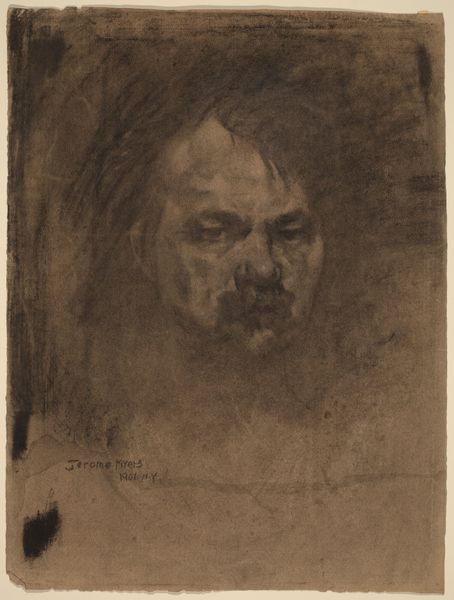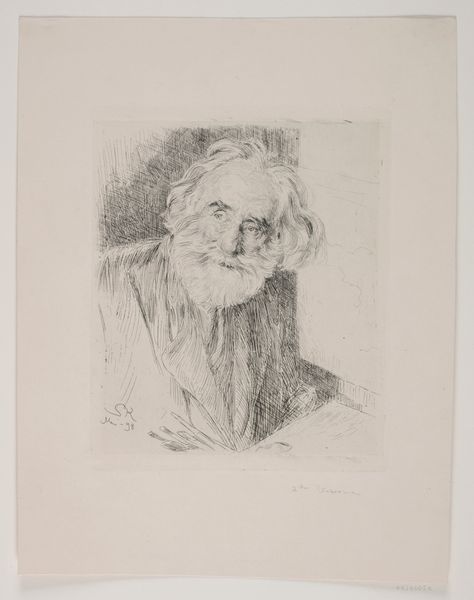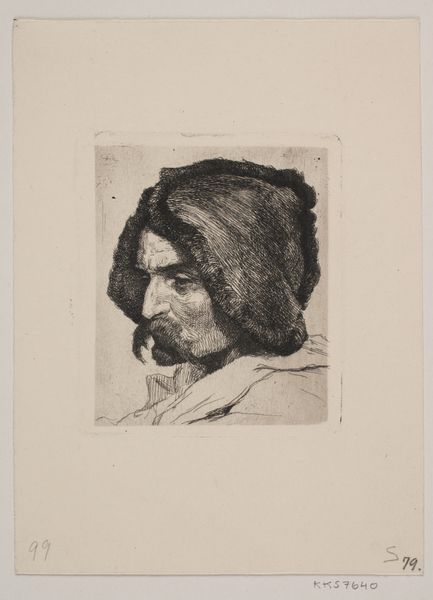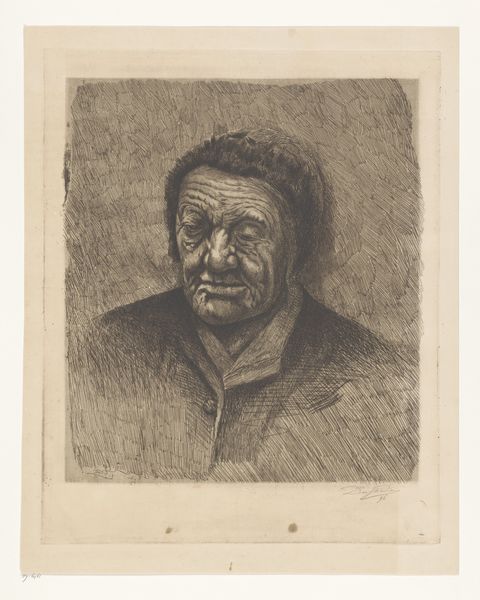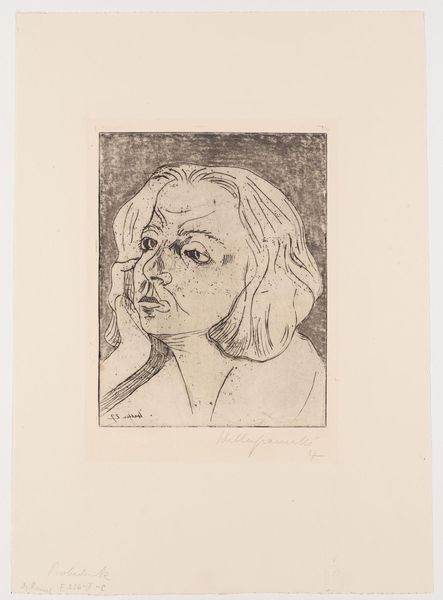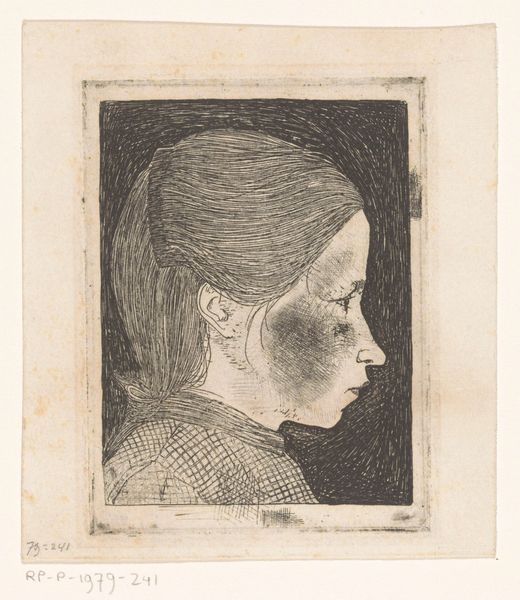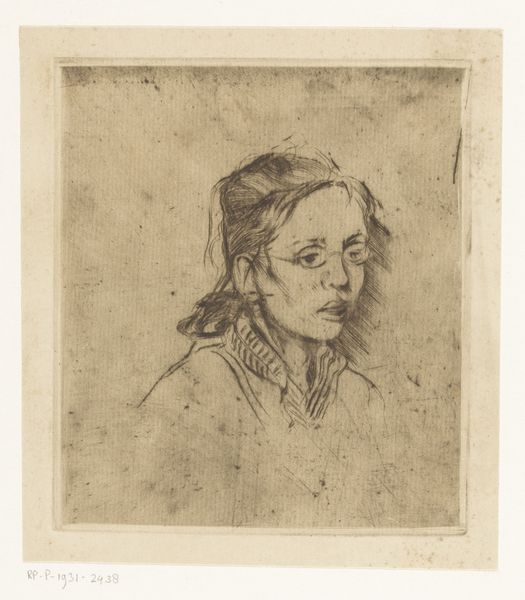
Dimensions: height 410 mm, width 295 mm
Copyright: Rijks Museum: Open Domain
Editor: Here we have "Head of an Old Woman" by Elisa Weiler, likely created between 1875 and 1913. It's an etching, and it’s got this really striking, almost melancholic feel. I'm immediately drawn to the woman's weathered features and the intricate lines used to create her portrait. What stands out to you the most when you look at this piece? Curator: Oh, you've hit on something lovely already. Those lines aren't just intricate; they're practically alive, aren't they? I imagine Weiler, squinting slightly, the light just so, really seeing every ridge and furrow etched by time. It reminds me of looking into a well, deep and echoing. Do you get a sense of her strength? Not a loud, boastful strength, but a quiet, enduring power that whispers of resilience? It's funny, but in many ways I look at the woman in this picture and I see the whole history of Europe staring back. Does that resonate with you? Editor: Definitely. There's something about her gaze that feels like she’s seen it all. But I also feel like the realism of the artwork may say something more. It makes me think about the stories behind those features. Curator: Exactly! Weiler’s resisting idealization. She's honoring the lived experience, and that makes this more than just a portrait. It’s a testament. Maybe it is an unsung epic about all those anonymous grandmothers holding everything together while history books celebrated kings and generals. Editor: That’s beautiful. It completely shifts my perspective. Seeing it as more than a portrait, but rather as a quiet symbol of enduring strength, brings new depth to the artwork. Curator: Glad to open the view up for you. So often we forget, in the whirlwind of "important" events, that the true grit of history lies in those faces, etched like this, with lives lived. Now what kind of a story do *you* imagine for her?
Comments
No comments
Be the first to comment and join the conversation on the ultimate creative platform.
